4/2002
InnoTrans 2002
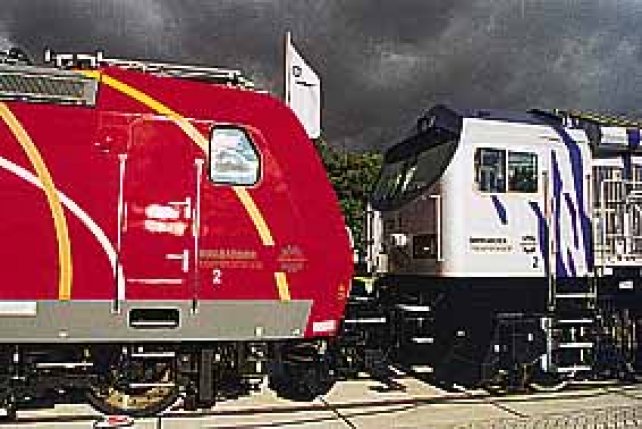
After a break of two years, between 24 and 27 September 2002 the Trade Fair Centre in Berlin hosted the fourth edition of the popular InnoTrans rail technology fair. Although this event does not have a long tradition, it has already become the leader in its field, at least within continental Europe. This latter statement can be confirmed by simply comparing the number of exhibitors, exhibits, participant countries and visitors with those at other such events in the past.
Issue 4/02 covers this extraordinary show with a report comprising of no less than 18 pages, with additional 10 pages dedicated to the thorough technical description of two of the most intersting locomotive types, launched during this event.
Face-to-face DB Cargo unit 185 087 equipped with the “Schweiz-Paket”(“Swiss Pack”) and the first series “Blue Tiger”, which was purchased by MKB during the InnoTrans.
Photo: Tomáš Kuchta
Title 41
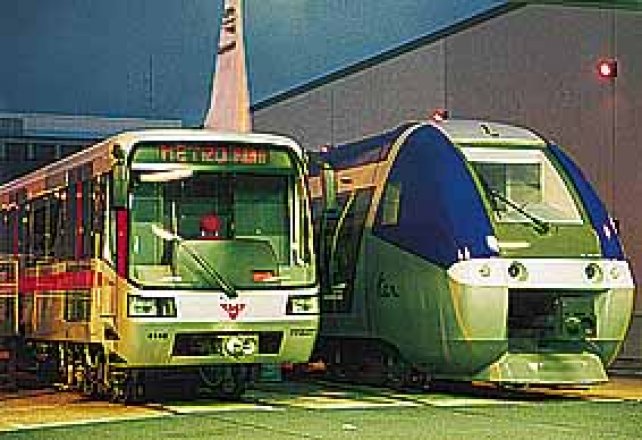
Although locomotives and freight wagons covered the most of the outdoor area, multiple units and municipality transportation were represented with attractive vehicles too.
Here the Siemens TS built front car (No 4145) of the first unit from the second batch of the M1 type 5-car trainsets for Praha metro is seen next to the mock-up of the leading car of the "Autorail Grande Capacité" (AGC) unit, which is offered by Bombardier, not only as EMU or DMU but also as the bi-modal unit.
Photo: Tomáš Kuchta
Title 42
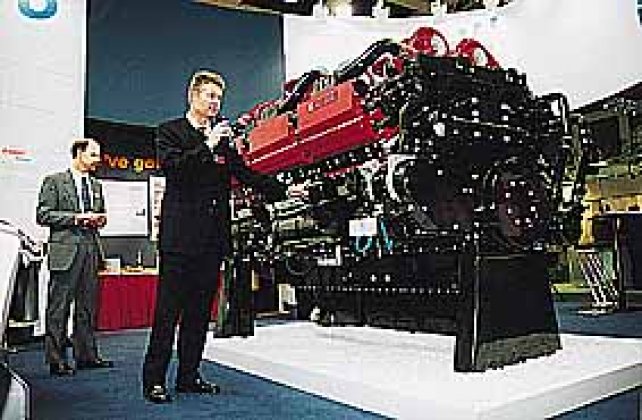
Naturally the InnoTrans show is the best opportunity to introduce or even launch the newest products not only from the field of rail vehicles, but also of the components of all kinds.
For example, Cummins made here the world debut of its new QSK78-L high speed diesel engine, with a 2 611 kW power capability.
Photo: Petr Kadeřávek
DB Class 146.1
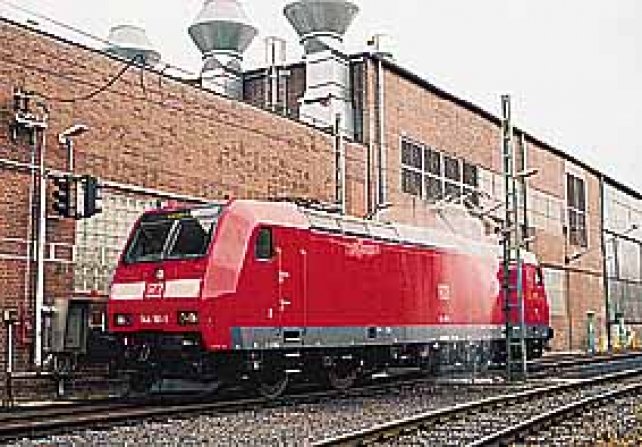
In August 2002 the DB Regio electric locomotive fleet was expanded through the addition of another sub-class, namely Class 146.1, an improved version of the earlier Class 146.0, also built by Bombardier Transportation. Class 146.1 was conceived with a view to possible international duties, its capability of operating under 15 kV 16,7 Hz or 25 kV 50 Hz catenary has been achieved through several technical adaptations involving the main transformer wiring, the traction converter, and various other power components. Simultaneously, Bombardier engineers have succeeded in increasing the power output, from 4,2 MW for Class 146.0 to 5,6 MW for Class 146.1, without adding to the overall weight of the locomotive.
DB locomotive 146 101 at the Bombardier works in Kassel on 16 October 2002. The design of the roof segments is based on that of DB's Class 185's.
Photo: Tomáš Kuchta
Truly Double-Decked Trains
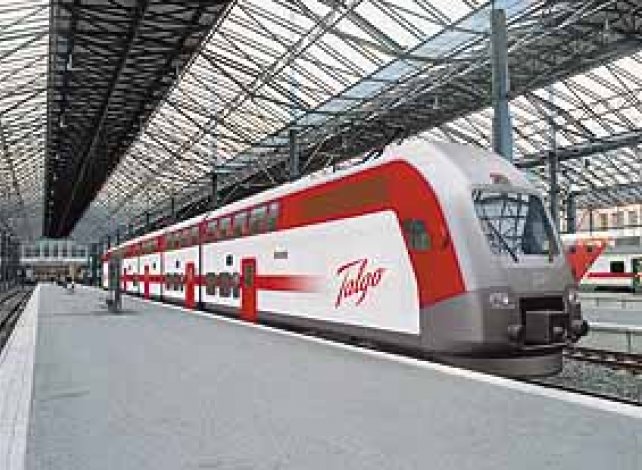
TREN ARTICULADO LIGERO, The Light Articulated Train – As the creator of innovative, untraditional Spanish trains, Talgo has been a well known success for many years. Their latest creation is now poised for the same success and, since it is the first electric double-deck unit with a continuous passageway through both floors the world over. Amongst already closed order for VR (Finnish railways), Talgo hopes to be succesfull with this design in the competition for the S-Bahn System Zürich,which should be concluded in December 2002.
An artist impression of the unit in the VR livery.
Photo: Drawing: Talgo
Pan-European Locomotive
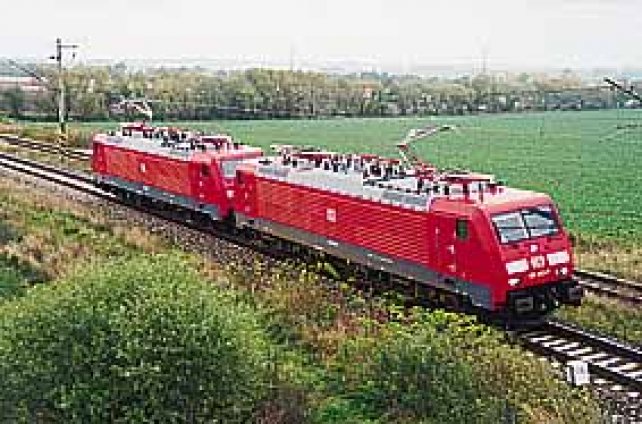
For a near future, DB Cargo plans to use multi-system vehicles in an international service within 14 countries of the continental Europe. In these terms, and considering a new situation on the market, the conditions of an original option for the production of another 100 locomotives of Class 152 were amended and a contract for 100 four-system locomotives of the new Class 189 was signed.
For the first time, the Class 189 was unveiled to the public at the InnoTrans 2002 trade fair. Moreover here, on 25 September Siemens symbolically handed over the exhibited 189 002 as the first locomotive of the class to the customer.
Since they were produced, all three prototype units undergo various trials. While 189 001 is being tested in Austria and Hungary, 189 002 and 003 are present at the Czech test circuit at Cerhenice. For the first time both locomotives were tested coupled with each other on 18 October 2002. The photo taken on this day depicts 189 003 + 002 approaching the station at the test circle.
Photo: Jaromír Pernička
EurailSpeed 2002
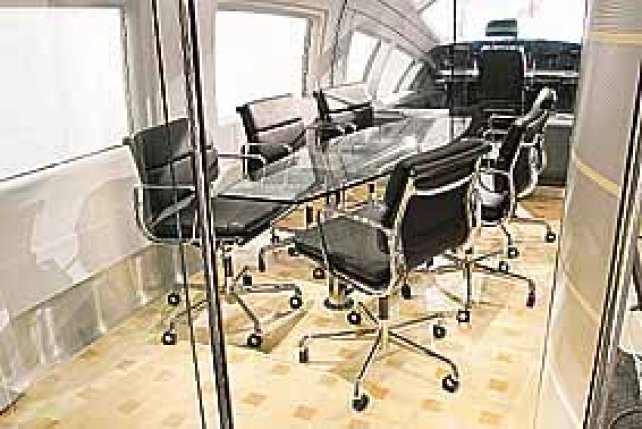
From 23 to 25 October 2002 the 4th World High Speed Rail Congress EurailSpeed 2002 took place in Madrid. The main programme was held at the International Congress Palace on the outskirts of Madrid where, in addition to various technical seminar meetings, visitors could attend great numbers of companies’ stalls engaged in the production of vehicles, construction of railways and railway administrations. The station of Chamartín in Madrid offered a trains exhibition.
Siemens TS presented here for the first time its brand-new high speed platform Velaro as well as a 1:1 mock-up of the AVE S 103 (Siemens designation: Velaro E), the new high speed train for the RENFE. Technically speaking, the Velaro concept is based on further developments of the ICE 3 trainset for DB which features distributed drive equipment. The interior will offer unusally comfortably arranged and equipped compartments. On this illustration the club lounge with view through the engine driver’s cockpit is presented...
Photo: Drawing: Siemens TS
75 Years Of The ŠKODA Locomotives

Looking back into the distant past and comparing it with recent or contemporary history of rail vehicle production at ŠKODA Works in Plzeň prompts one to ponder how and when the branch of „steel wheels of rails“ was established in Škoda Works in Plzeň at the beginning of the 20th century. We often hear of long-term tradition, which has its roots in Austria-Hungary times. Hardly could anybody anticipate that in the new independent state, in the Czechoslovak Republic, a new branch related to railway transport would receive such a response...
The most typical representative of electric locomotives by ŠKODA Plzeň is a type 34E designated for the former U.S.S.R., marked as SŽD Class ChS2: a supply system 3 kV DC, the axle arrangement Co’Co’, a maximum speed of 160 km/h. Between 1960 - 76 there were the total of 1 062 units built in several modifications. Here, ChS2T-448 with an electrodynamic brake caught shortly after its finishing.
Photo: ŠKODA DT
And much more!
Cover of 4/2002
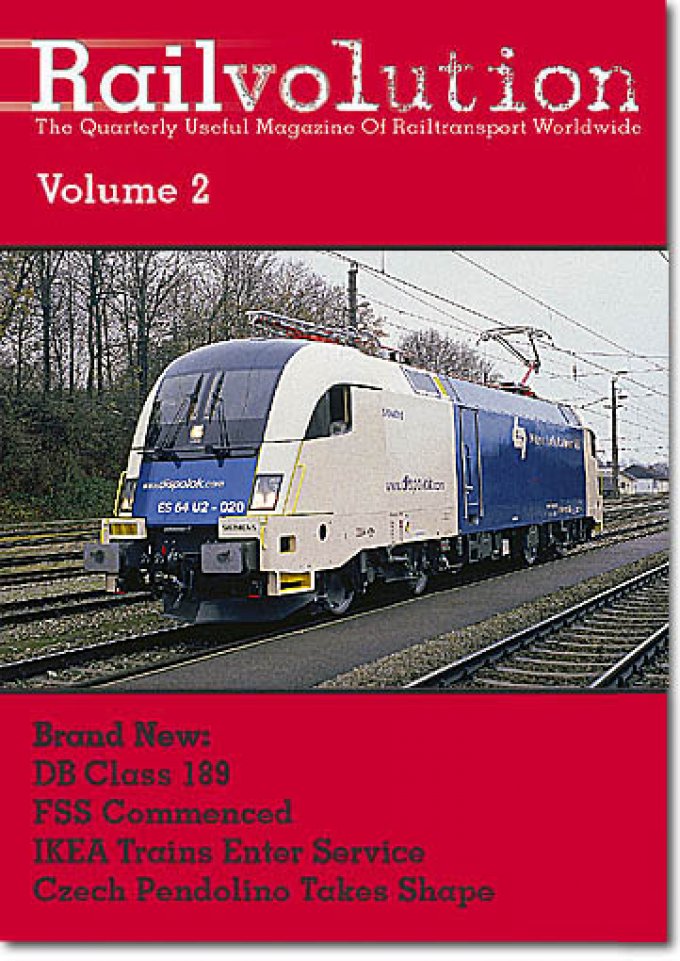
Poster
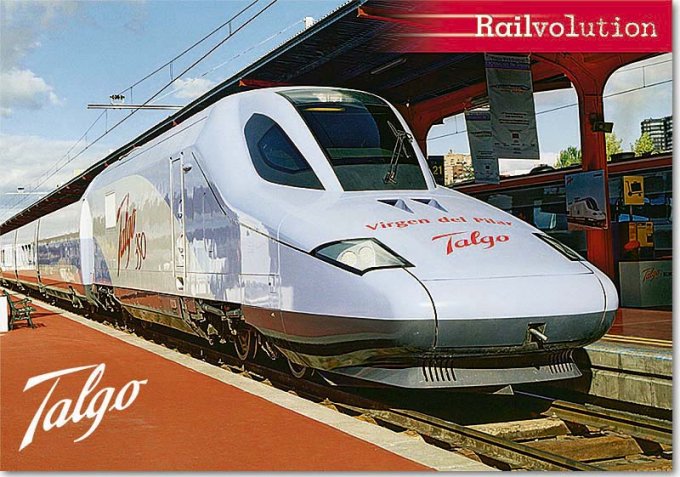
Features: Talgo
